Explore the latest insights from top science journals in the Muser Press daily roundup (October 6, 2025), featuring impactful research on climate change challenges.
In brief:
Ethiopia: When soils become a tool against climate change
Soil carbon: A hidden but decisive wealth
Imagine an invisible treasure lying beneath your feet. This treasure is called soil organic carbon. It retains water, feeds plants, makes the land softer and more resilient. For agropastoral families, this means fewer nasty surprises: fields that withstand a late rain, more stable yields, harvests that feed children even in difficult years.
But this capital is eroding. For decades, forests have been cleared, crop residues diverted to feed livestock or fuel stoves, and rains have stripped away fertile layers. As a result, soils have lost much of their initial carbon stock. And that is not all. Climate projections forecast a hotter (+2.2 °C by 2070) and drier future, which accelerates the decomposition of organic matter. In other words: soils lose faster than they recover.
Yet every kilo of carbon that remains in the ground counts twice: it limits global warming and boosts local productivity. It is easy to see why scientists insist: soil is a strategic lever, both for Ethiopia’s climate policies and for the survival of farming households.
The dilemma is biomass. Every straw, every branch, every pile of manure is coveted. Should it feed animals, heat the home, or nourish the soil? These are daily trade-offs, made in smoky kitchens or at field edges, by families juggling immediate needs and uncertain futures.
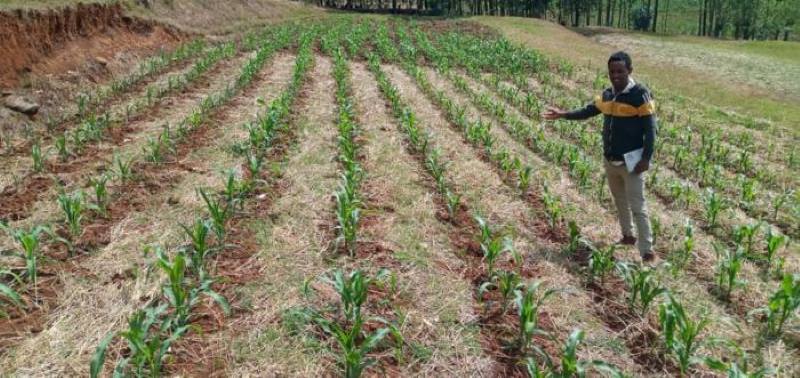
Diving into the future with a “digital twin” of the soil
Measuring the breath of millions of plots is impossible. So scientists have created a virtual twin: a computer model called RothC. They fed it with data on soils, climates, crops, and simulated fifty years of change. Their method is precise: each “pixel” of the territory has its own trajectory, reflecting the basin’s complex mosaic.
They tested eight scenarios. Four levels of farming practices: from business-as-usual up to +50% organic inputs (leaving residues in the field, more manure, cover crops, agroforestry). And two climates: the current one, and the hotter, drier one to come. This combination produced a vast tableau telling the future of soils year by year until 2070.
But these abstract figures translate into very concrete gestures: leaving more straw on the field, building a manure shed to avoid losses, sowing legumes that enrich the soil, planting hedges to curb erosion. Behind every option lies extra work – often shouldered by women – and collective decisions: who decides grazing? Who hauls manure? Who buys cover crop seeds?
The great lesson of this approach is clear: there is no one-size-fits-all solution. In the wetter west, soils can store large amounts of carbon. In the drier east, even ambitious efforts are not enough. This means science does not offer a magic recipe but rather a map: it shows where to invest heavily and where to adapt pragmatically.
Promises and limits: When climate reshuffles the cards
The results are both encouraging and alarming. Good news: if practices change, soils do store more carbon. In an unchanged climate, the gains are spectacular: up to 13 tonnes per hectare over fifty years in the most ambitious scenarios. Bad news: with warming and less rainfall, these gains are cut in half. In some cases, soils even start losing carbon.
Another finding: territorial inequalities widen. The basin’s wetter west retains strong storage potential. The drier east sees its hopes dwindle, even with heroic efforts. This means some communities may turn carbon sequestration into income or an agricultural asset, while others must focus on adaptation just to survive.
Beyond maps and numbers, faces appear: those of farmers confronted with impossible trade-offs – using straw to keep a cow alive or to protect the soil from pounding rain? Burning wood to cook dinner or leaving it standing to enrich the land?
These choices reveal a strong political message: regenerative practices are not just a matter of technique. They require enabling conditions: energy alternatives to free up biomass, cooperatives to manage manure, carbon finance to offset labor costs. Without these, the most ambitious scenarios will remain on paper, far from field realities.
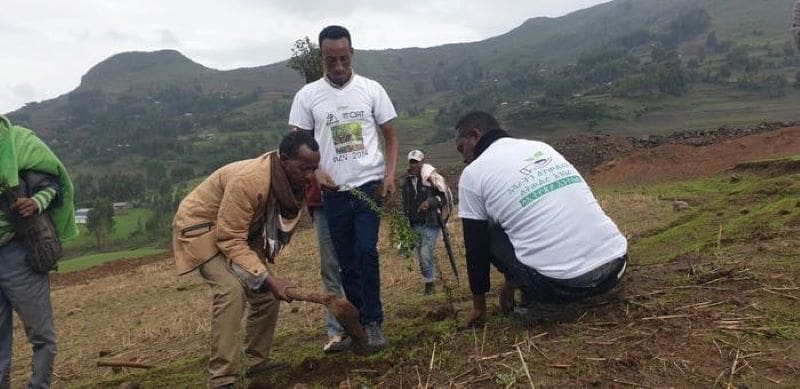
What next? A realistic roadmap
The study does not stop at diagnosis; it also proposes solutions. It invites action in stages. Start with what is feasible: secure part of the residues, better conserve manure, establish local grazing rules. These simple, community-driven steps already make a difference.
Then scale up with legumes, cover crops, agroforestry. But these efforts must not rest solely on women’s shoulders. Reducing their workload, easing access to inputs, and recognizing their role in farming systems are essential conditions for a just transition.
Local authorities and technical services also play a key role. They must target territories: invest heavily where the potential is high, while helping elsewhere to safeguard fertility with adapted solutions. They must also regulate use: set goals for residue restitution, support manure storage, encourage energy alternatives.
Finally, donors and climate finance mechanisms are central. Without financial incentives, households cannot afford the risk. But if stored carbon tonnes are rewarded, if bonuses support efforts, then sequestration becomes a source of income, not just a burden.
In short, the message is clear: even though climate change complicates the task, Ethiopian soils can once again become a foundation of resilience. But this requires combining science, social organization, and financing. Soil carbon is not an abstraction: it is the key to a viable agricultural future for millions of families.
Journal Reference:
Wuletawu Abera, Amsalu Tilaye, Degefie Tibebe, Assefa Abegaz, ‘Modelling SOC dynamics on cropland under different regenerative agriculture practices and climate change scenario using RothC model in the Abbay basin of Ethiopia’, Environmental and Sustainability Indicators online 100957 (2025). DOI: 10.1016/j.indic.2025.100957
Article Source:
Press Release/Material by The Alliance of Bioversity International & CIAT
Unique videos show how trawling restrictions brings back life to the sea
The marine wildlife in Kosterhavet National Park has changed rapidly in recent years. The introduction of trawling restrictions in the area for the national park during the last 25 years, brought about a change in the living conditions for the animals that live on the seabed.

“Animals that capture nutrients through filtration, such as mussels, anemones and soft corals, do not thrive when bottom trawls stir up sediment from the seabed. Several of these species have recovered significantly,” says Matthias Obst, researcher on marine ecosystems at the University of Gothenburg and research leader in the project.
Loss at shallow depths
At the same time, the study shows that large and heat-sensitive species are declining at shallow depths in the Koster Fjord or are disappearing completely from the area. The most dramatic decline has been in the football sponge Geodia barretti, while the excavated fileclam Acesta excavata also declined steadily. Both animals are important components of the Koster Sea ecosystems as they build habitats for many other organisms.
The study was made possible thanks to a large treasure of underwater videos taken at a rock wall in Koster Sea. The wall has been filmed with an underwater robot during various study visits, teaching sessions and projects at the Tjärnö Marine Laboratory from 1997 onwards.
Machine learning
“The videos were stored on a number of thick hard drives that were kept on a shelf. We are lucky that the underwater photographers at the Tjärnö Marine Laboratory chose to keep this data until now, when we can use machines to go through it,” says Obst.
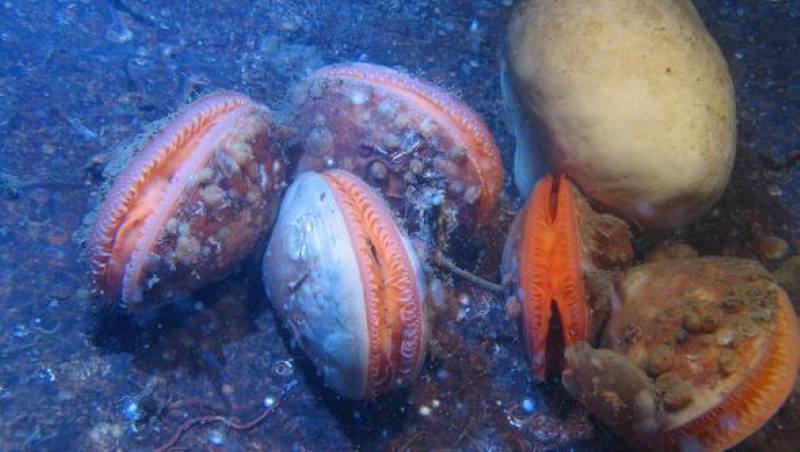
Without machine learning, it would have been impossible to analyse such a large number of underwater videos with varying quality and count the abundance of 17 different species over 26 years, 1997–2023. Master’s student Christian Nilsson reviewed selected parts of the material and taught an AI object detection model to recognise characteristic features of each species.
Good timeline
In the end, the AI model had become so good that the results could be trusted. It took the model only a few hours to analyse 4.4 million images from the selected videos. The National Academic Infrastructure for Supercomputers in Sweden, NAISS, was used for this purpose.
“We now have a good timeline showing how the 17 species have increased and decreased over the 26 years covered by the data, but also how they have responded to increasingly warmer water temperatures. We see that heat-sensitive species are losing their living environment in shallow waters due to the warm temperatures there,” says Obst.
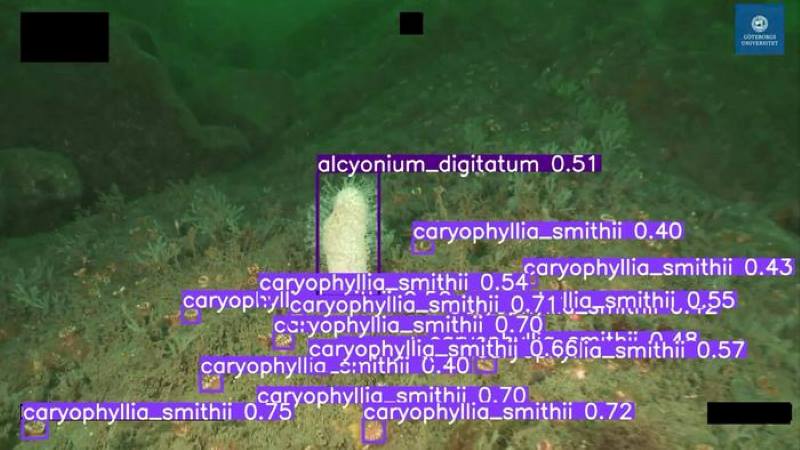
Driven by climate change
The study is part of the EU-funded program Digital Twin of the Ocean (DTO), which combines marine research with modern technology development for the sustainable management of our marine ecosystems. It shows that the protective measures implemented in the Kosterhavet National Park have been effective and are helping to bring balance to the ecosystem.
“But there are some organisms that may not be saved by the protective measures in the national park. Rising temperatures in the Koster Sea are driven by climate change, which is difficult to stop. For these species, it may be appropriate to find new areas with deeper water where these species can find refuge,” says Obst.
Journal Reference:
Nilsson, C. L., S. Faurby, E. Burman, J. Germishuys, and M. Obst, ‘Applying Deep Learning to Quantify Drivers of Long-Term Ecological Change in a Swedish Marine Protected Area’, Ecology and Evolution 15, 9: e72091 (2025). DOI: 10.1002/ece3.72091
Article Source:
Press Release/Material by University of Gothenburg
Viruses help cut farm greenhouse gas emissions by targeting soil microbes
Viruses, often seen only as disease-causing agents, may hold surprising potential as natural allies in the fight against climate change. A new study published in Nitrogen Cycling reveals that soil viruses can reduce nitrous oxide (N2O) emissions by selectively infecting the microbes responsible for producing this potent greenhouse gas.
Nitrous oxide is nearly 300 times more powerful than carbon dioxide at trapping heat in the atmosphere. It is largely released from agricultural soils through a process called denitrification, in which soil microbes convert excess fertilizer into nitrogen gases. Until now, most efforts to curb these emissions have focused on fertilizer management and microbial communities, with little attention to the role of soil viruses.
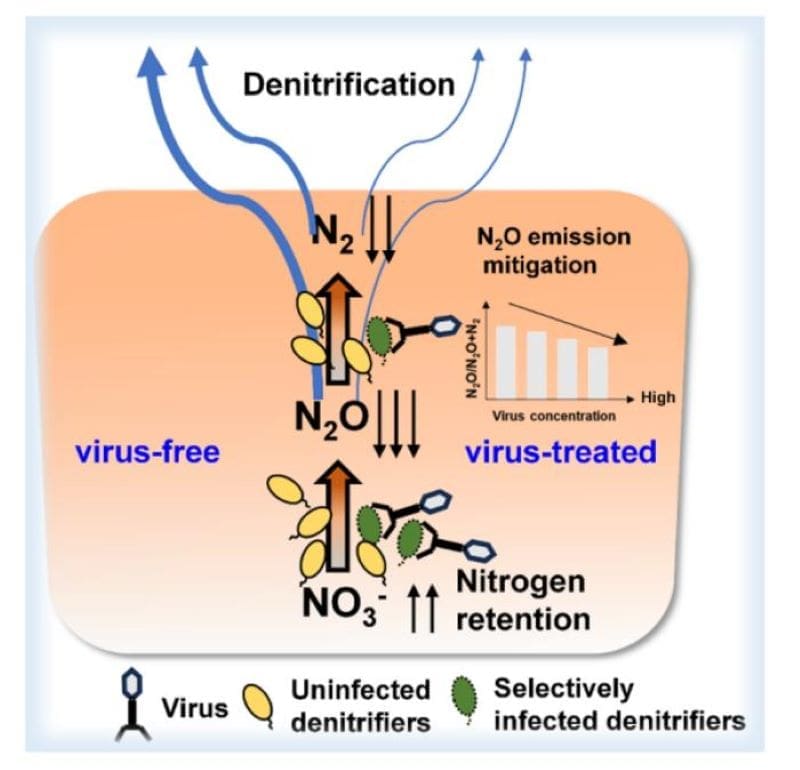
Researchers from the Chinese Academy of Sciences conducted controlled experiments to test how different concentrations of viruses affect soil emissions. They added live virus extracts to farm soil collected from the North China Plain, a region known for high fertilizer use and significant nitrogen losses. Using gas measurements and genetic sequencing, they discovered that viral addition reduced N₂O emissions by up to 20 percent compared with untreated soil.
The reason, the team found, lies in the way viruses interact with denitrifying microbes. Viral infection suppressed major bacterial groups that carry the genes needed to produce nitrous oxide. In particular, the study highlighted that viruses targeted members of Pseudomonadota, an abundant group of soil bacteria, leading to lower production of greenhouse gases. Network analysis also showed that soils with higher virus levels developed more complex virus–microbe interactions, suggesting that viral infections actively reshaped the microbial community.
“Our findings show that viruses are not just passive residents of the soil but active players that can alter greenhouse gas emissions,” said senior author Shuping Qin. “This opens the door to considering virus-based approaches for climate-smart agriculture.”
While the study was carried out under controlled laboratory conditions, the authors emphasize that the findings could have wide-reaching implications. If similar results hold in farm fields, viral regulation of soil microbes might offer a new tool to help agriculture reduce its environmental footprint. The researchers suggest that phage-based applications could one day be developed to target high-emission microbes, though more studies are needed to test feasibility, safety, and stability in real-world soils.
By highlighting an overlooked component of soil ecosystems, this research points to the hidden potential of viruses in climate mitigation strategies. Far from being only destructive, viruses in the soil may play a critical role in supporting sustainable food production and protecting the planet.
Journal Reference:
Song W, Yao J, Fu Y, Qin S., ‘Viruses mitigate soil nitrogen loss and N2O emissions during denitrification by selectively infecting denitrifiers’, Nitrogen Cycling 1: e004 (2025). DOI: 10.48130/nc-0025-0002
Article Source:
Press Release/Material by Biochar Editorial Office | Shenyang Agricultural University
Featured image credit: Gerd Altmann | Pixabay




